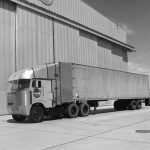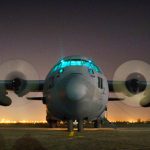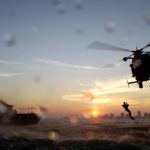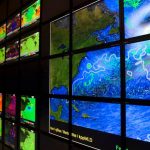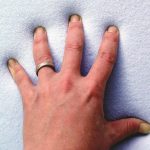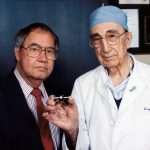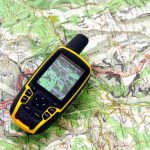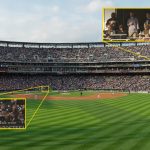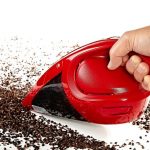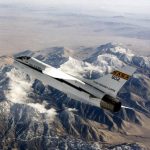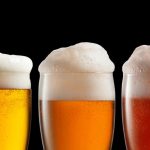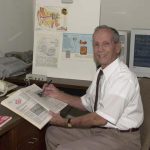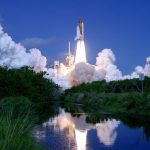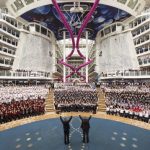Space age tech we use


By Nick Heath, From Tech Republic
What has the space race done for us?
Space exploration is a reward in itself: giving us glimpses of Martian vistas and the birth of stars near the heart of our galaxy.
But the question of how spacebound technologies benefit the wider world continues to be raised. The answer is ‘quite a lot’, with spinoffs from NASA-developed tech finding applications far beyond non-stick frying pans.
To coincide with NASA making a host of new technologies freely available for commercial use, we look back at the practical technologies to emerge from the space agency’s research in recent decades.
Aerodynamic trucks
Trucks – the lifeblood of the modern consumer economy – are able to transport goods to and fro more cheaply thanks to NASA research.
The streamlined contours of modern lorries have been shaped by NASA research into vehicle aerodynamics. NASA estimates its contributions to truck design have reduced fuel consumption by as much as 6,800 gallons per year for the average vehicle.
Image: NASA
Dustbuster
The handheld vacuum cleaner was born out of a NASA partnership with Black & Decker (B&D) to build battery-operated tools to support exploration and sample collection on the moon. The software that B&D designed to minimise the power consumption of a handheld, battery-powered drill was improved and used to develop a range of appliances that didn’t require a power cord, including the Dustbuster.
Image: iStock / wingedwolf
Supercritical wings
NASA research from the 1960s and 70s into the ideal wing shape for aircraft travelling near the speed of sound would influence the design of almost all modern aircraft.
Image: NASA
Search and rescue
Personal location beacons derived from NASA technology have helped in the rescue of more than 40,000 people since 1982. The beacons use satellites to pass distress messages and rescue locations to authorities.
Image: U.S. Coast Guard
Cochlear implants
In the mid-1970s, Adam Kissiah, an engineer at NASA’s Kennedy Space Center with no medical background, began work on developing what would become the cochlear implant. Driven by a desire to counter his own hearing loss, Kissiah used his experience working with electronic, sound and vibration sensor systems as part of the Space Shuttle Program. Today, cochlear implants provide hearing sensation to people suffering from severe-to-profound hearing loss and who receive little to no benefit from hearing aids.
Image: NASA
Phase change materials
Shirts, sheets and even underwear make use of the phase-change materials developed as part of NASA-funded research into next-generation spacesuits. The material can absorb, hold and release heat as needed and in doing so keep the wearer comfortable.
Image credit: NASA
Heart pump
While waiting for a donor heart to become available for a heart transplant, hundreds of people have been kept alive by cardiac pumps that were designed with the aid of NASA. Engineers from the agency contributed to the design, based on their expertise in simulating fluid flow through rocket engines.
Image: NASA
Better beer
If you like your beer out of this world, you might appreciate this tech born out of work done by Johnson Space Center and the Mars Society.
Pioneer Energy’s CO2 Craft Brewery Recovery System was created on the back of efforts to harvest gas from Mars’ CO2-rich atmosphere. The idea was to use the gas in the process of creating fuel, oxygen and drinking water. Each month, the Pioneer Energy system can capture five tons of CO2 released during the fermentation process, allowing it to be reused to carbonate the brew.
Image: iStock/artJazz
Digital cameras
Without NASA-derived technology, the selfie may have never come to pass.
The CMOS active pixel sensor inside digital cameras in everything from smartphones to drones derives from an image-capturing device that NASA invented to miniaturize cameras for interplanetary missions.
Image: iStock / KayTaenzer
GPS
The precise positioning made possible the Global Positioning System (GPS) underpins navigation in the modern world.
The satellite-based system, which plays a crucial role in self-driving cars, owes some of its ability to pinpoint locations to an accuracy of 5cm to NASA software. In the 1990s, researchers at NASA’s Jet Propulsion Laboratory developed an algorithm that corrects for the drift of GPS satellites and other factors that would otherwise result in GPS positioning being off by as much as 15 meters.
Image: iStock / Eureka_89
Shock absorbers
Buildings and bridges across the world are braced using technology based on shock absorbers originally used to protect spacecraft and launch pad equipment during shuttle launches.
NASA claims the technology protects structures from damage during earthquakes.
Image: iStock / fazon1
Memory foam
Invented by NASA-funded researchers as a way of keeping pilots cushioned during flights, memory foam is today used to make beds, couches and chairs more comfortable, as well as in shoes and football helmets.
Image: Dynamic Systems Inc.
Fly by wire aircraft
In the 1970s, NASA and Draper Laboratory created the first plane that wasn’t flown directly by a pilot.
Before its creation, the controls used by pilots were directly connected to the rudder and other components that controlled the aircraft’s flight. The NASA plane introduced a fly-by-wire system, where a computer collects the inputs from the pilot’s controls and uses that information to control the aircraft. Today, such fly-by-wire systems are a common feature in airliners and military aircraft.
Image: NASA
Emergency blankets
Otherwise known as space blankets, these were developed by NASA in 1964. The highly reflective insulators went on to be used in emergency kits and also by long-distance runners after finishing a race to avoid sharp changes in body temperature.
Image: AFM Inc
OpenStack
OpenStack is an open-source software platform that allows organisations to build their own private clouds. Still managed in part by NASA, it evolved out of the Ames Research Center’s Project Nebula.
Image: NASA
Gigapan photography
The striking vistas of the Martian landscape captured by the NASA rovers Spirit and Opportunity were created by stitching together multiple images captured by their one-megapixel cameras.
NASA shared the technology with industry and today photographers use the resulting Gigapan photography platform when covering public events, professional sports, games and concerts.
Image: David Bergman
Predicting mechanical failures
If software could predict when to repair machines, unnecessary checks could be avoided and unexpected failures reduced.
Such a system was born out of work at NASA’s Ames Research Center in 2003 to monitor a test bed for an experimental hybrid rocket engine. The resulting CEMSol Integrated System Health Management has been used by technology firm Lockheed Martin to predict valve failures on the C-130 Hercules aircraft. Lockheed Martin said it recouped its $70,000 investment tenfold as a result of lower maintenance costs and fewer mission delays.
Image: U.S. Air Force
For more on this story go to: http://www.techrepublic.com/pictures/photos-nasas-space-age-tech-that-we-use-every-day/?ftag=TRE684d531&bhid=22414566808023710814878762937500

